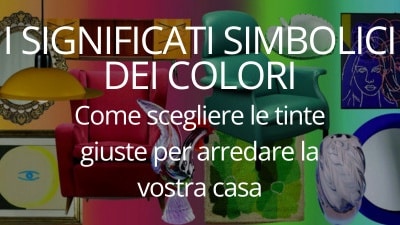Discovering Modern Art

It has been a few years now that we hear the word “modernariato” echoing among second-hand markets and the trendiest milieus dedicated to design and interior design.
This is how fortunate this term has been, entering common vocabulary and being used by anyone (even incorrectly) as well as by industry professionals. But what are we really referring to when we talk about Modernariato? We can classify as pieces of modernariato objects, furnishings, and design elements conceived during the last century, more precisely between the 1930s and the 1980s.
To explain this phenomenon, it is useful to trace its origins and mention the 1851 Crystal Palace Exhibition; it opened new perspectives in the world of craftsmanship, suggesting an increasingly close alliance between arts and industry.

It is precisely in this context that the 20th century opens up: on one side, the push towards the industrialization of the production process; on the other, the great influence of the Arts&Crafts movement of William Morris, characterized by an almost manic attention to the creation of objects and the decorative arts. Morris, an English artist and writer, advocated a return to medieval-style craftsmanship.

The work was meant to be manual, of great quality, and above all, it should have been enjoyable for the worker. Machinery was only introduced when necessary; it should have been used to assist humans rather than replace them. However, in practice, the costs associated with this type of production could not compete with those of industrial-scale production.
The Arts&Crafts movement failed, but certain core principles such as attention to detail and quality, the creation of repeatable ornamental patterns, and the desire to make aesthetically pleasing everyday objects survived, laying the foundations for what would come to be called industrial design.
This should also include the birth of a new figure, that of the designer. They are responsible for conceptualizing and designing a product from aesthetic, ergonomic, and functional perspectives, as well as the ability to mass-produce this product at very low costs.
These aspects are revolutionary in the history of furniture design: functional yet beautiful objects and furniture become accessible to all (or almost all). They are characterized by clean and simple lines, the use of natural and even “humble” materials such as wood, linen, teak, and leather paired with metal, plastic, and shaped plywood. The colors range from neutral pastels in furniture to the vibrant colors of decorative items. The value of these objects lies in the designer’s creative effort (and reputation) more than in the prestige of the materials or craftsmanship (as is the case with antique pieces). This is how the process of creating an object or furniture moves out of the artisanal sphere and into mass production; losing its uniqueness but becoming considerably more affordable.
In Italy, Giò Ponti (architect, artist, and designer) played a key role in defining the hybrid and eclectic figure of the designer. Starting from an education in architecture, he soon became involved in the world of craftsmanship, particularly ceramics.

Recognizing the potential of industrial-scale production, he revolutionized processes and strategies at the Richard Ginori Ceramics Factory, becoming its artistic director. The collaboration between designers and industrial realities became a common practice. At the same time, in addition to creating ceramics, he pursued editorial activities, founding the magazine *Domus*, which would become the hub of Italian architectural and design debate in the second half of the 20th century.
Let’s not forget the furniture from the “Domus Nova” series; introduced for the department store La Rinascente, and the artistic glass pieces created for Christofle and Venini. Following in Giò Ponti’s footsteps, many architects decided to also embark on a design career, among them the famous Ico Parisi with his graceful furnishings characterized by sharp angles; Giotto Stoppino and his distinctive Cobra chairs, Alberto Rosselli with his “confidential sofa,” and Piero Fornasetti with his whimsical creations, and so on.
What is behind the success of modernariato, which seems to be booming in recent years?
A piece of modernariato, even with its distinctive and original style, is certainly less demanding to combine with contemporary furnishings compared to antique furniture, which often feels heavy and overly ornate. The simplicity of the lines and materials is very much appreciated; moreover, they immediately give any space a “retro” look, which is very much on trend. Let’s not forget decorative objects and home accessories. Often in bright and cheerful colors, many of us remember seeing and experiencing these items in our grandparents’ homes—a factor that adds a valuable sentimental component.

Saturday, April 6, by participating in our event “Moving Spazio 900” you can immerse yourself in the world of modernariato! Starting at 6:00 PM to the sounds (strictly on vinyl) of DJ Lo Straniero; you will admire a vast preview of objects, furniture, accessories, and clothing directly from the 1950s–70s. We look forward to seeing you at our store in Milan at Viale Espinasse 99!







